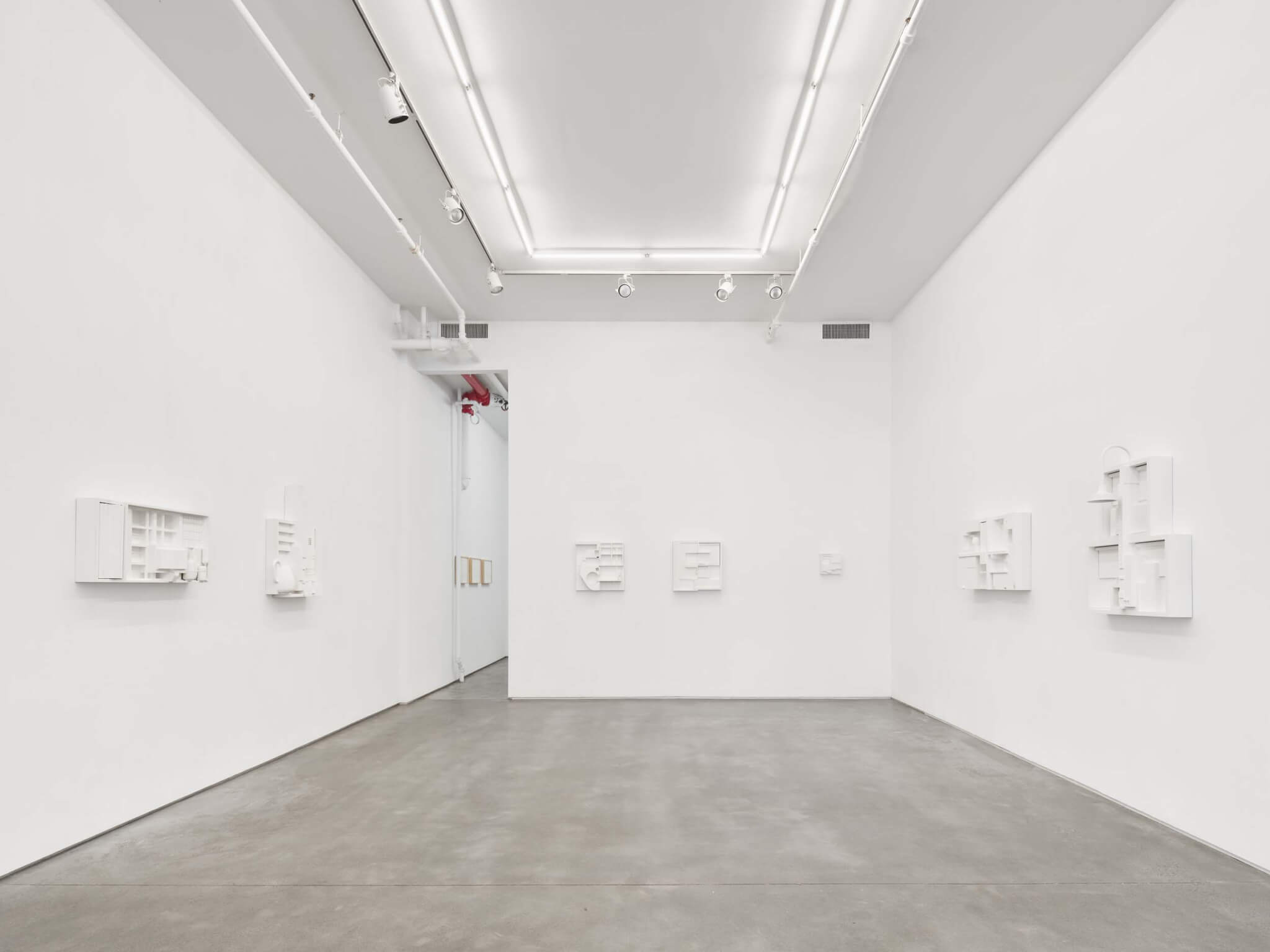Anthony Ames, White Compositions
a83
83 Grand Street
New York
Extended through July 21
In New York’s Soho neighborhood, gallery a83 presents White Compositions, the latest exhibition by Anthony Ames featuring 11 bas-relief wall sculptures that oscillate between representation and abstraction. Ames, an architect and artist based in Atlanta, has operated the office of Anthony Ames Architect for nearly 50 years. Following Fifty Paintings, Ames’ 2022 retrospective at a83, White Compositions includes both early and debut panels spanning from 1995 to 2024.
White Compositions, now extended through July 21, is unique among current art and architecture events in New York City. Similar themes emerged from those I attended last month: At e-flux, Mabel O. Wilson lectured on how territorial borders in the West Bank function as ecological wastelands. At the Center for Architecture, curators Ashley Bigham, Betty Roytburd, and Sasha Topolnytska examined architecture’s role in generating hope for imperiled communities in Ukraine. At Citygroup, Nerea Calvillo, Elise Misao Hunchuck, and Austin Wade Smith conversed about the carbon capture and sequestration industry and its illusion of environmental sustainability. At the Whitney Biennial, organizers Chrissie Iles and Meg Onli orchestrated a “dissonant chorus” of artists exploring how artificial intelligence complicates reality and gender. And at MoMA, Joan Jonas presented recent installations addressing climate change and inter-species kinship.
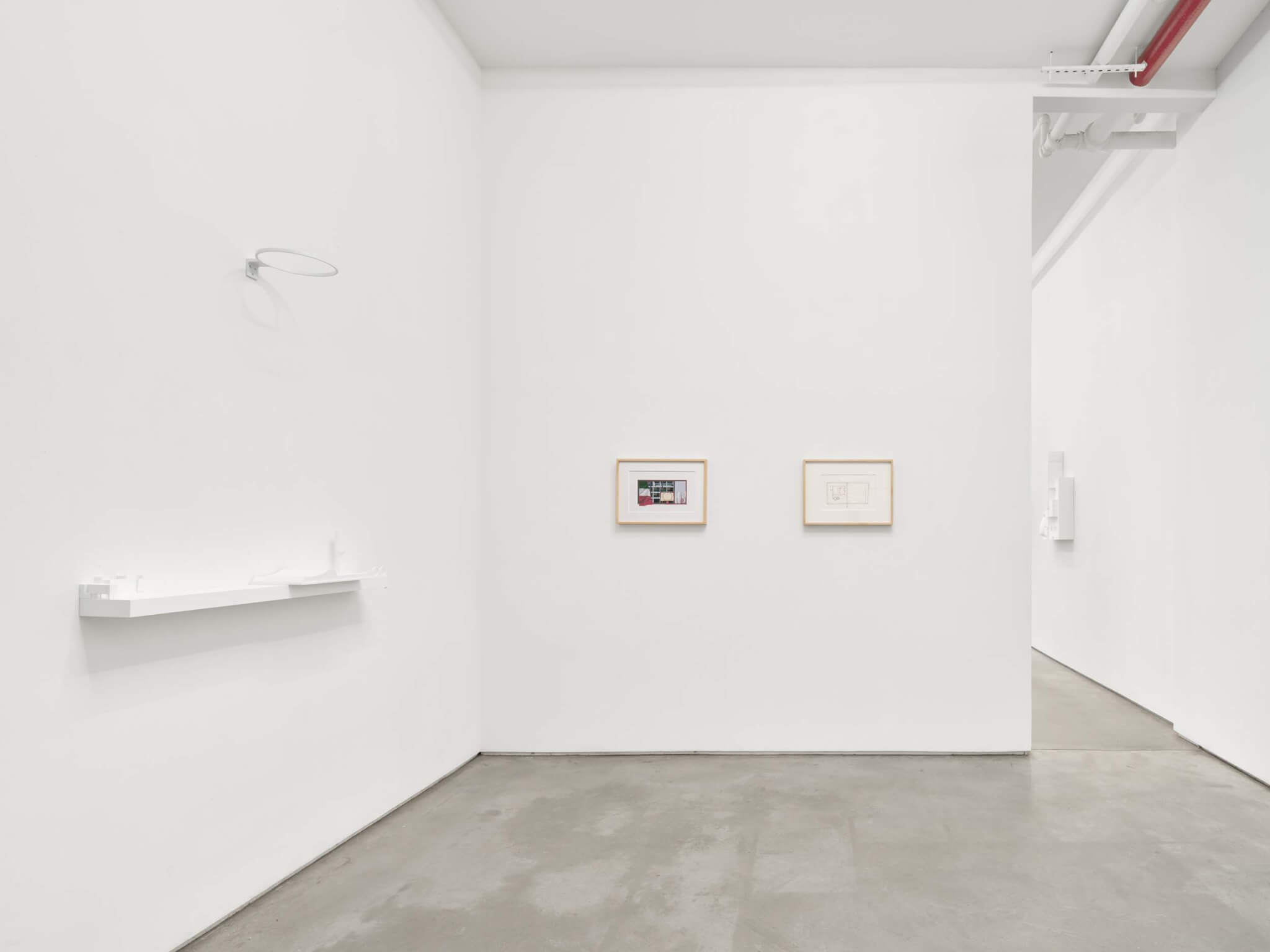
After viewing Jonas’s exhibition, I overheard some gossip in the hallway: “Apparently it’s about a cult!” they said. Although this isn’t entirely wrong given her decades-long exploration of ritual, a broader question arises: Is the spread of art and architecture’s reckoning with the climate crisis becoming cultic? For this viewer: no. However, other ideas are in play in White Compositions.
The 11 pieces are extensions of Ames’s paintings, which began in the mid-80s. For decades, he has used the same pastel palette of acrylic house paint to represent a limited catalog of elements: his Swid Powell porcelain, B. B. King’s Gibson, Morandi-esque tableaus, Le Corbusier’s glasses, and abstract architectural elements, to name a few. In the white compositions, Ames desaturates these pastel objects and makes their thin layers of paint volumetric. “In this exhibition, the paintings are all white,” Ames told AN, “I wanted that not as a sign of improvement, it’s just another way of examining the same things that were in color.”
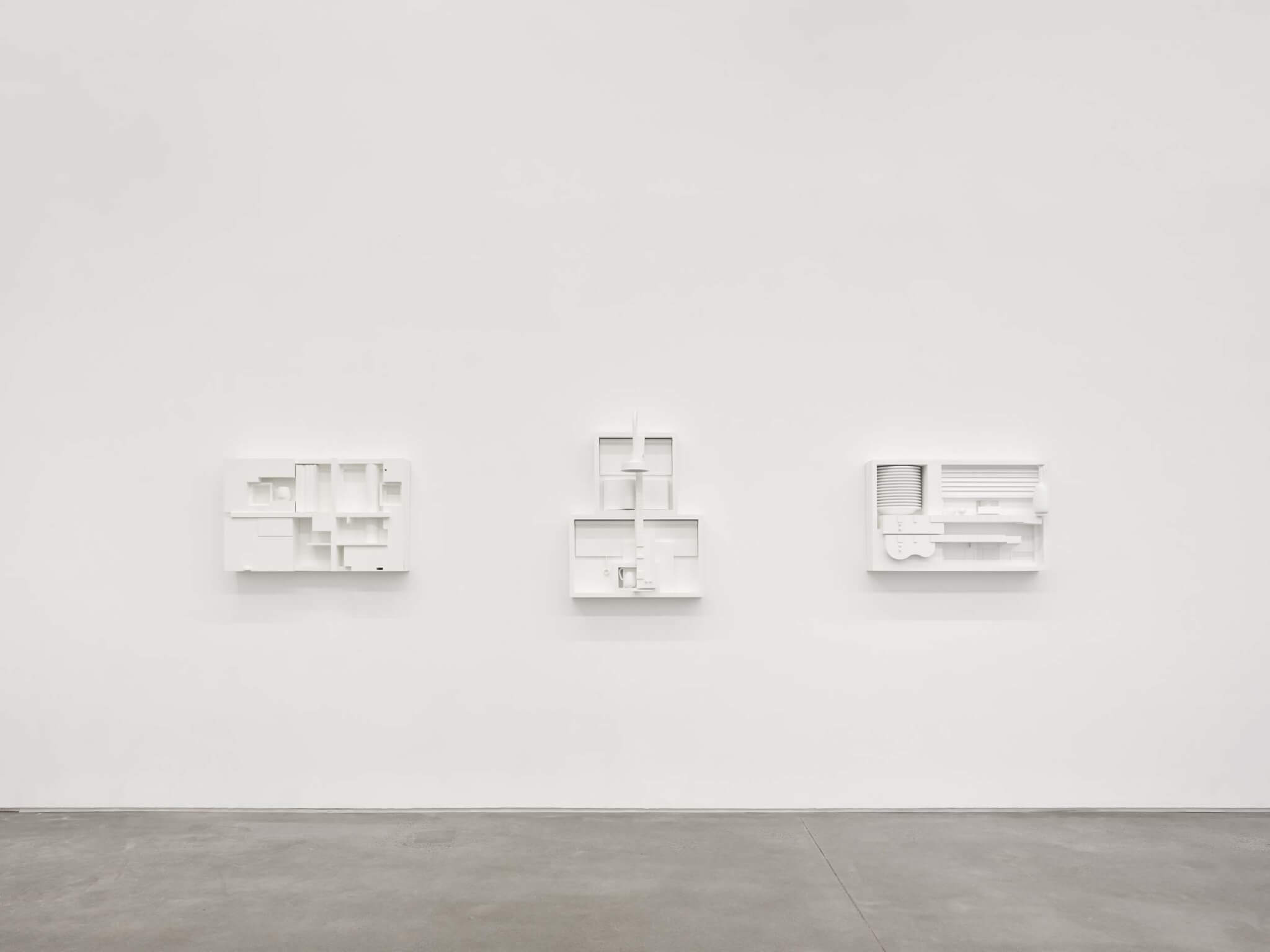
The relief panels follow a specific lineage of influences. In his introduction to the first volume of Ames’ residential work, Tom Schumacher quotes John Hejduk telling students they would be “continuators” of architects like Le Corbusier and Mies, as opposed to “innovators.” In the second volume of residential work, Val Warke reveals that Hejduk was paraphrasing Le Corbusier writing about Auguste Perret in 1932, arguing that he was not a revolutionary but a “continuator” of other architects. Thomas de Monchaux’s review of Fifty Paintings in Log 55 contextualizes this influence of canonical modernist architects within Ames’s graduate education at Harvard GSD (‘78), where emulating Corbusier was practically institutional policy. While others under Corbusian influence like Michael Graves and Richard Meier transitioned to other formal approaches, Ames developed these extrapolations, and continues to refine them today. “I was pretty aggressive about it,” Ames said with a chuckle, “I just knew I wanted to do that kind of architecture.”
Like Giorgio Morandi, Ames’s disciplined design strategy involves reassembling a limited genre of objects into new compositions in perpetuity. “I have a deep admiration for [Morandi],” Ames said, “Robert Ryman was in a similar situation. He wasn’t always trying to reinvent himself. He was just doing his art.” Apart from some opaque early self-portraits, Morandi abandoned the human figure and focused on painting the same dusty bottles in the same room for 50 years until his death in 1964. In Ames’ compositions, one can only find traces of human inhabitation: half-drawn shades, open books, partially consumed containers. Apart from the occasional cameo of Le Corbusier’s modular, Ames’ omission of the human figure foregrounds what remains: architecture.
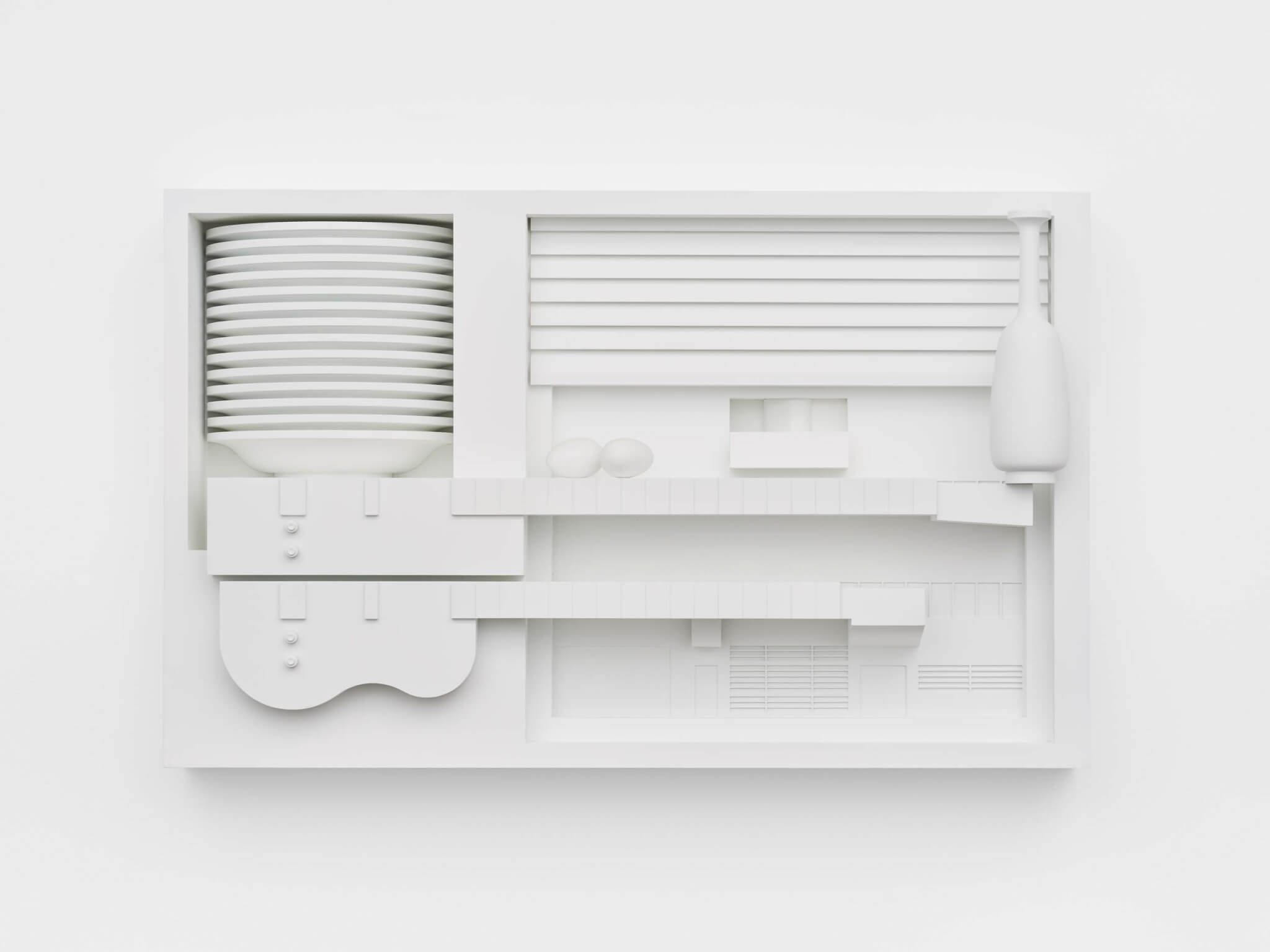
The highly formal compositions oscillate between architectural fragments, scale models, still life, and relief sculptures. For example, White Composition 5 (2012) derives from the collage displayed in a83’s back gallery. The elements are the same in both: a double-square panel with a view through a ribbon window, a transparent basketball backboard, and then across a book stand, curtain, and various containers to the Casa del Fascio beyond. In the composition, these elements both recede into the surface plane and advance from it: Ames transforms Terragni’s facade into a scale model, sets vases on a tiled shelf, draws the curtain across a window, and makes the backboard realistic. Each assemblage promotes these ambiguous, overlapping readings of space.
Ames’s relentlessly consistent approach—call it “piece thievery,” pasticcio, or bricolage—carries his ongoing career as a “continuator” artist and architect. But unlike Morandi’s non-positional natura morta, or Le Corbusier’s loose cubism, Ames’ compositional tableaus are engaging to view precisely because they’re so damn meticulous. “You can tell they’re all pretty rigid in their composition,” Ames said, “but I enjoy it.”
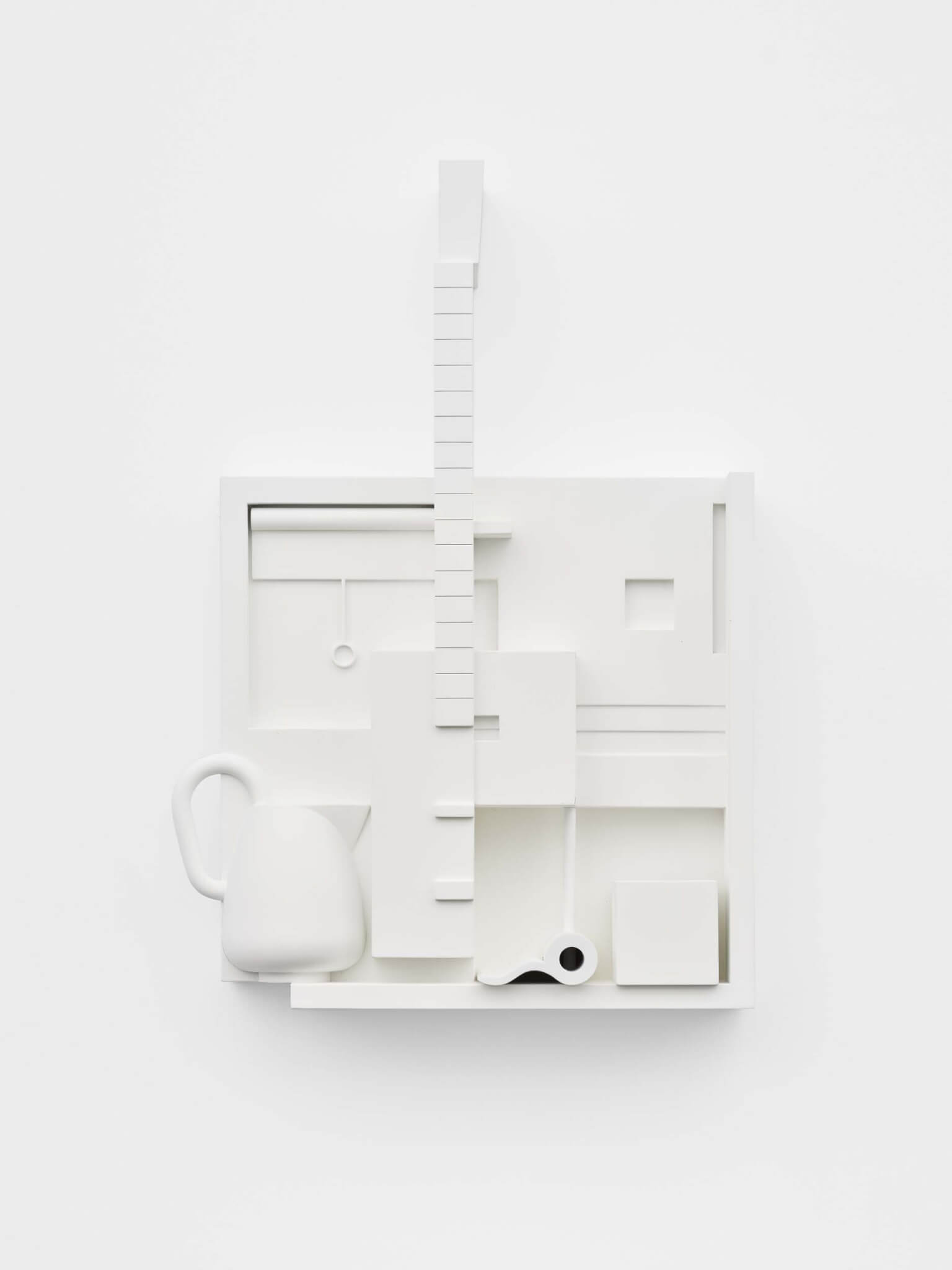
The shared enthusiasm for Ames’s work among my students and peers testifies to its cultic appeal across generations. After viewing the exhibitions calling for inter-species kinship and “decentralized protocols for regenerative governance structures,” standing in a83 and staring at the Casa del Fascio through the backboard of White Composition 5 gave me a sinking feeling, like we’re in the fourth quarter of climate change in which all critical extractions are subject to increasingly necessary illusions of “regenerative paradigms.”
However, White Compositions is unmotivated proof that architecture can still be itself, full of joy, humor, and sincerity. De Monchaux concluded that such a project is a reminder of presence. My short-form video content riddled brain found relief in the stillness and presence of these compositions. But their blaring silence must irritate the hell out of some people. Yet this, I think, is their quality. And their plain recognition of the end.
Paul Mosley is a writer, designer, and assistant professor of architecture and urban design at Kent State University.

